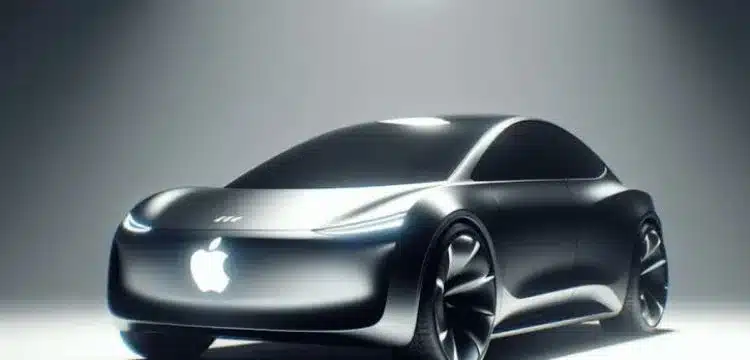[vc_row][vc_column][vc_column_text dp_text_size=”size-4″]Apple has reportedly delayed the launch of its highly anticipated electric vehicle (EV) under Project Titan, shifting the timeline from 2026 to 2028. Alongside this delay, there are indications that Apple is scaling back on its initial plans for advanced self-driving features.
Initially aiming for a “level four” autonomous driving system, capable of handling most driving conditions without human intervention, Apple’s revised strategy focuses on incorporating “level two” autonomy.
Read more: Apple Permits Third-party App Stores On iPhones For The First Time
This level is comparable to Tesla’s Autopilot, allowing the vehicle to execute specific maneuvers autonomously while still requiring the driver to remain in control.
The decision to opt for a more conservative approach to autonomous driving is considered a pivotal moment for Apple. The company’s board is now expected to weigh the options, determining whether to intensify efforts to meet the original ambitions or potentially discontinue the Project Titan EV altogether.
This shift in strategy underscores the challenges and complexities involved in developing advanced autonomous driving technologies for mass-market vehicles.
The reported delay in the EV launch and the adjustment of autonomous driving goals come after years of speculation and secrecy surrounding Apple’s electric car project. Initially aiming for a 2024 release, the company faced challenges related to battery technology, supply chain issues, and internal disagreements over the direction of the project.
The decision to extend the timeline to 2028 is seen as a pragmatic move by Apple, allowing more time for the development of crucial technologies and reducing the pressure to meet an earlier deadline.
The shift to level two autonomy aligns with the current industry trend, where many automakers are focusing on advanced driver-assistance systems rather than fully autonomous vehicles. Level two autonomy allows for features like lane-keeping assistance and adaptive cruise control, providing a balance between safety and driver engagement.
While Apple has been investing heavily in electric and autonomous vehicle technologies, the road to bringing a consumer-ready EV to market has proven challenging. Competing with established automakers and navigating the complex landscape of automotive regulations and standards requires meticulous planning and execution.
The decision to delay the EV launch could also be influenced by the global semiconductor shortage, which has impacted various industries, including automotive manufacturing. The shortage of critical components has led to production delays and increased costs for automakers worldwide.
Apple’s move to reassess its autonomous driving goals reflects the inherent difficulties in achieving higher levels of autonomy. Level four autonomy, where a vehicle can handle most driving conditions without human intervention, poses significant technical, regulatory, and safety challenges. Many companies in the autonomous driving space have faced setbacks and recalibrated their ambitions due to the complexity of achieving full autonomy.
As Apple navigates the evolving landscape of electric and autonomous vehicles, its decisions will have broader implications for the industry. The company’s focus on user experience, design, and integration of cutting-edge technologies could shape the future of electric and autonomous mobility.
In conclusion, Apple’s decision to delay the launch of its electric vehicle and scale back on autonomous driving goals reflects the challenges and uncertainties in the rapidly evolving automotive landscape. The shift to a more conservative approach highlights the complexities involved in developing advanced technologies for mass-market vehicles. Apple’s strategic decisions will continue to be closely watched as it navigates the competitive and dynamic electric and autonomous vehicle market.[/vc_column_text][/vc_column][/vc_row]











